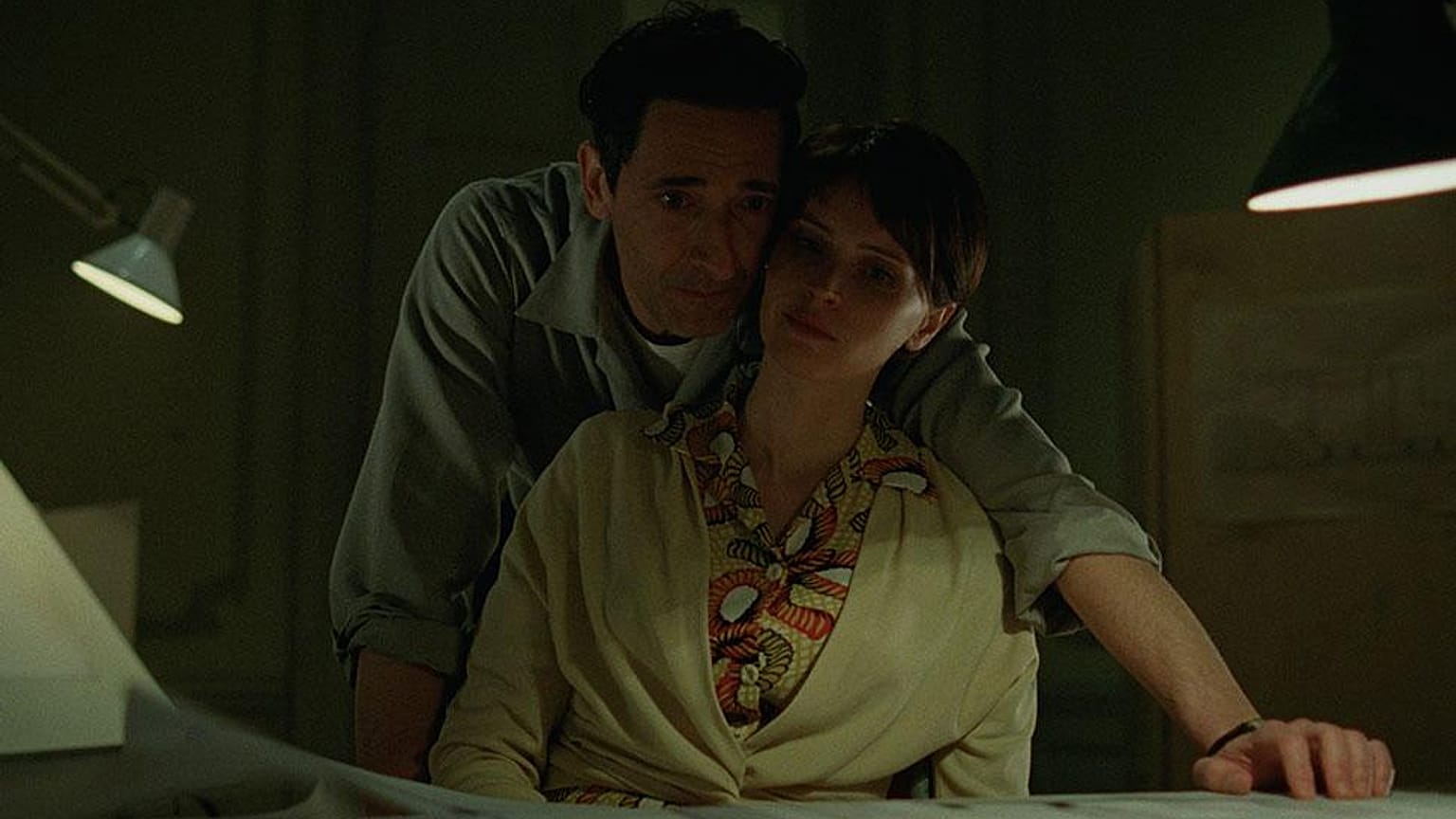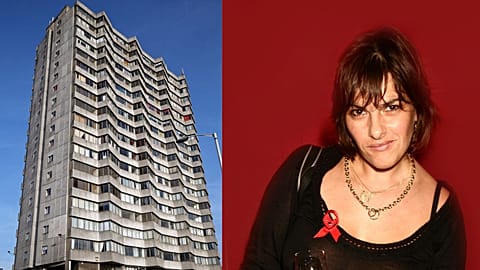Six years in the making, this powerful American saga is one Paul Thomas Anderson would be proud of. And it's our pick for the top prize of the 81st Venice Film Festival... So far.
From the very start of Brady Corbet’s third film after The Childhood of a Leader and Vox Lux, you know you’re in for an epic.
Beginning with an overture and split into two halves by way of an intermission, The Brutalist is an American saga that’s six years in the making, and... Well, prepare to be floored.
Before the stylish opening credits appear, we meet László Tóth (Adrien Brody), a Bauhaus-trained Jewish architect from Budapest who emigrates to the US in 1947. His wife Erzsébet (Felicity Jones) is alive and he hopes she’ll be able to join him soon – provided her and László’s niece Zsófia (Raffey Cassidy) can leave a displaced-persons camp and secure the necessary paperwork to do so. The ominous score by Daniel Blumberg crescendos and drowns out the voiceover before "Part 1: The Enigma of Arrival." As the title card suggests, the first half of Corbet’s film wastes no time in dealing with the immigrant experience, as László is a foreigner and never shakes this weight he is made to carry. In many ways, it’s all there at the end of the first single-take: an upside-down Statue of Liberty.
“Give me your tired, Your poor, Your huddled masses yearning to breathe free,” reads the famous inscription. But the reality is far from welcoming, as America’s trumpeted principles about tolerance and upward mobility often ring hollow, and Corbet announces what The Brutalist will have to say about the fabled American Dream: it is an illusion powered by envy, xenophobia and the preservation of a status quo that ensures privilege remains insular.
László meets with his cousin but is then falsely accused of trying to seduce his wife, an injustice that costs him a client he recently secured. Pampered heir Harry van Buren (Joe Alwyn) wants his tycoon father’s library reimagined and László delivered what soon gets recognized as a triumph of minimalist design by several architecture magazines. The initially furious Harrison van Buren (Guy Pearce) comes back to László when his tantrum has subsided and delights in the “intellectually stimulating” conversations he has with him. It turns out he has an ambitious project, one that will either make or break the famed architect trying to restart his career...
Written by Corbet and Mona Fastvold with a scope worthy of the best Paul Thomas Anderson films – reminiscent of There Will Be Blood and The Master’s aspirations – The Brutalist wows from start to finish. While the runtime of 215 minutes initially seems perversely long and indicative of a passion project run amok, not a single frame is wasted in this meticulously composed epic.
Shot in VistaVision – the first US film in this format since 1961’s Marlon Brando-starrer One-Eyed Jacks – and screening in its Venice premiere in 70mm, The Brutalist is sumptuous in its stylistic execution, revealing Corbet as an actor-turned-director who can rise to the challenge of his ambitions.
Joining him is Adrien Brody, whose turn as a Holocaust survivor is both raw and fascinating in the way varying shades of tumult and passion intertwine at all times. It recalls his work in Polanski’s The Pianist, and his engrossing performance as a man who is perverted by the company he keeps, becoming a creator who “worships only at the altar of himself”, is matched by Felicity Jones’ turn as Erzsébet in "Part 2: The Hard Core of Beauty." She is a loving and supportive wife but not a crushed partner blind to the world that surrounds her. He may be the titular brutalist in the sense he specializes in the functional architecture; however, the other sense of the word meaning cruelty belongs to the characters Guy Pierce and Joe Alwyn portray. And Erzsébet understands the score faster than her husband.
The Van Buren father-son duo embody the capitalist elites, but also those who under the guise of culture and affinity for the arts, savagely maintain hierarchies based on wealth.
The patriarch wants his name to be associated with László’s singular talents, and despite his big claims that it is the responsibility of the privileged to nurture artists’ visions, he progressively reveals a loathsome attitude as a cultural gatekeeper, only interested in his own legacy. To him, the denial of an artist’s freedom of thought and even identity is incidental, as immigrants should be cheap, deferential and grateful. As for Alwyn’s Harry, he grows (much like his father-aping moustache) into a singularly detestable slimeball who believes that anything he takes is rightfully his. His presence assures that the next generation will uphold the same imbalanced structures based on exclusion and entitlement. Like father like son... And vice-versa, as the two family members commit the same degrading act at two points in the film, even if Harry’s takes place off screen.
“Why architecture?” asks Harrison during an evening he’s hosting.
“Nothing is of its own explanation. Is there a better description of a cube than its own construction?” replies László.
The themes throughout The Brutalist are weighty without feeling ponderous, and in delving into myth-making and its many facets, Corbet delivers a film that also becomes its own explanation. It’s a big, bold swing that pays off massively. Granted, the first half may be the superior of the two, but when your film draws you into a balanced yet asymmetrical maze you don’t want to escape from, intermissions can’t count down quickly enough.
A resounding triumph PTA would be proud of. And if it leaves the Lido emptyhanded at the end of the festival, it would be a brutal blow.
The Brutalist at the 81st Venice Film Festival in Competition.


















